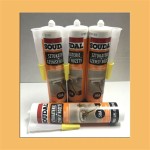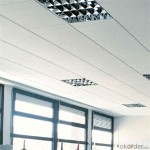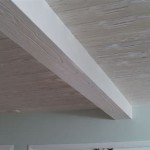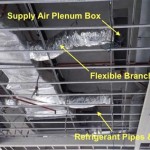Everything You Need To Know About Bulk Ceiling Tiles and Drywall
Ceiling tiles and drywall are fundamental construction materials used extensively in both residential and commercial building projects. When undertaking large-scale projects or seeking cost-effective solutions, purchasing these materials in bulk can offer significant advantages. This article provides a comprehensive overview of bulk ceiling tiles and drywall, covering their types, benefits, factors to consider when buying in bulk, installation considerations, and maintenance.
Understanding Ceiling Tiles
Ceiling tiles are prefabricated panels designed to be installed in a suspended ceiling grid. They offer aesthetic appeal, acoustical control, and accessibility to utilities located above the ceiling. Commonly used in offices, schools, hospitals, and retail spaces, ceiling tiles provide a clean and uniform appearance while concealing ductwork, wiring, and plumbing.
Several types of ceiling tiles are available, each with distinct characteristics and applications. Mineral fiber tiles are a popular choice due to their excellent sound absorption properties and fire resistance. They are typically made from recycled materials. Fiberglass tiles offer superior acoustical performance and moisture resistance, making them suitable for environments with high humidity levels, such as swimming pools or kitchens. Metal ceiling tiles provide a durable and aesthetically pleasing option, often used in commercial and industrial settings. They come in a variety of finishes and patterns. Finally, gypsum ceiling tiles are made from a gypsum core with a decorative face. They offer good sound control and fire resistance and are often used in residential and commercial applications.
The benefits of using ceiling tiles are numerous. They improve acoustics by absorbing sound, reducing noise levels and reverberation. They are available in various designs, allowing for customization and aesthetic appeal. They provide easy access to utilities above the ceiling for maintenance and repairs. Many ceiling tiles offer fire resistance, enhancing the safety of the building. Finally, they can improve energy efficiency by providing insulation and reducing heat loss or gain.
Understanding Drywall (Gypsum Board)
Drywall, also known as gypsum board, is a panel made of gypsum plaster pressed between two thick sheets of paper. It is the standard material used for interior walls and ceilings in residential and commercial construction. Drywall provides a smooth, paintable surface and contributes to fire resistance and sound insulation.
Several types of drywall cater to specific needs. Standard drywall is suitable for most interior walls and ceilings. Moisture-resistant drywall, often referred to as "green board," is designed for areas with high humidity, such as bathrooms and kitchens. Fire-resistant drywall, also known as "Type X," contains additives that enhance its fire-resistant properties, making it ideal for areas requiring increased fire protection. Soundproof drywall incorporates layers of different materials to dampen sound transmission, making it suitable for home theaters or offices. Finally, cement board is a type of drywall used in wet areas behind tile or stone.
Drywall offers several advantages. It provides a smooth, paintable surface for walls and ceilings. It is relatively easy to install and repair. It offers fire resistance, enhancing the safety of the building. It contributes to sound insulation, reducing noise transmission between rooms. Finally, it is a cost-effective building material.
Benefits of Buying Ceiling Tiles and Drywall in Bulk
Purchasing ceiling tiles and drywall in bulk offers several advantages, particularly for large-scale construction projects.
Cost savings is a primary benefit. Bulk purchases typically qualify for discounted pricing compared to buying individual panels or sheets. This can result in substantial savings, especially for projects requiring large quantities of materials. Having a ready supply of materials on hand reduces the risk of project delays due to material shortages. This can help maintain project timelines and avoid potential cost overruns. Buying in bulk reduces the frequency of reordering, saving time and administrative costs associated with procurement. It also helps standardize the materials used throughout a project, ensuring consistency in appearance and performance. Finally, for large projects, bulk orders may qualify for free or reduced shipping costs, further lowering overall expenses.
Factors to Consider When Buying in Bulk
While buying in bulk offers advantages, careful consideration is crucial to ensure a successful purchase.
Accurately estimating the required quantity is critical. Overestimating can lead to wasted materials and storage issues, while underestimating can cause project delays. A detailed project plan and accurate measurements are essential. Confirming the availability of adequate storage space is also important. Ceiling tiles and drywall require dry, protected storage to prevent damage from moisture, pests, or physical impact. Consider the weight of the materials and the load-bearing capacity of the storage area. Comparing prices from multiple suppliers is crucial to ensure you are getting the best possible deal. Consider not only the price per unit but also any additional costs, such as shipping, handling, and taxes. Checking the material specifications to ensure they meet project requirements and building codes is also important. Verify the fire resistance, acoustics, and other relevant properties. Reviewing the supplier's reputation and reliability is also important. Check online reviews, ask for references, and assess their track record for delivering quality products on time.
Installation Considerations
Proper installation is essential to ensure the performance and longevity of ceiling tiles and drywall.
Ceiling tile installation requires a suspended grid system. Ensure the grid is properly installed and level to provide a stable and uniform surface for the tiles. Handle the tiles carefully to avoid damaging the edges or surface. A professional installation can maximize the benefits of acoustical properties and aesthetics. Drywall installation typically involves attaching the panels to wall studs or ceiling joists using screws or nails. Ensure the studs or joists are properly spaced and aligned to provide a solid backing for the drywall. Tape and mud the joints between the panels to create a smooth, seamless surface. Sand the mudded joints to achieve a uniform finish before painting or other finishing. Consider hiring a professional for installation, especially for large or complex projects. They have the expertise and tools to ensure a proper and efficient installation.
Maintenance
Proper maintenance can extend the lifespan and preserve the appearance of ceiling tiles and drywall.
Regularly inspect ceiling tiles for signs of damage, such as water stains, cracks, or sagging. Replace damaged tiles promptly to prevent further deterioration and maintain the ceiling's appearance. Clean ceiling tiles with a soft cloth or brush to remove dust and dirt. Avoid using harsh chemicals or abrasive cleaners, which can damage the surface. Regularly inspect drywall for signs of damage, such as cracks, dents, or water stains. Repair any damage promptly to prevent further deterioration and maintain the wall's integrity. Clean drywall with a damp cloth to remove dust and dirt. Avoid using excessive water, which can damage the surface. Repaint or refinish drywall as needed to maintain its appearance and protect it from moisture.
Key Point: Acoustic Performance and Sound Control
One of the most significant advantages of utilizing specific types of ceiling tiles and drywall lies in their ability to enhance acoustic performance and control sound within a space. This is particularly crucial in environments where noise reduction is paramount, such as offices, schools, hospitals, and residential buildings located near busy streets or airports.
Acoustic ceiling tiles are specifically designed with materials and textures that absorb sound waves, reducing reverberation and echo. This creates a more comfortable and productive environment by minimizing distractions and improving speech intelligibility. The Noise Reduction Coefficient (NRC) is a key metric used to measure the sound absorption capabilities of ceiling tiles. A higher NRC value indicates greater sound absorption. When selecting ceiling tiles for acoustic performance, it is essential to consider the NRC rating and choose tiles that meet the specific needs of the space.
Similarly, soundproof drywall incorporates layers of different materials, such as damping compounds or resilient channels, to dampen sound transmission through walls and ceilings. This helps to block out external noise and prevent sound from traveling between rooms. The Sound Transmission Class (STC) is a key metric used to measure the sound insulation capabilities of drywall. A higher STC value indicates greater sound insulation. When selecting drywall for sound control, it is important to consider the STC rating and choose drywall that meets the specific needs of the space. Careful installation is also crucial to maximize the soundproofing benefits. Gaps and cracks in the drywall can significantly reduce its sound insulation performance. Sealing all joints and penetrations with acoustic caulk or sealant is essential to create a soundproof barrier.
Key Point: Fire Resistance and Safety Considerations
Fire resistance is a critical consideration when selecting ceiling tiles and drywall, as these materials can play a significant role in protecting occupants and property in the event of a fire. Fire-resistant ceiling tiles and drywall are designed to slow down the spread of fire and provide valuable time for evacuation and firefighting efforts.
Fire-resistant ceiling tiles typically contain materials such as mineral wool or fiberglass, which are non-combustible and can withstand high temperatures without melting or collapsing. These tiles are often classified based on their fire resistance rating, which indicates the amount of time they can withstand exposure to fire. Selecting ceiling tiles with an appropriate fire resistance rating is essential to meet building codes and ensure the safety of the building. Fire-resistant drywall, commonly known as "Type X" drywall, contains additives that enhance its fire-resistant properties. These additives help to slow down the burning process and prevent the drywall from collapsing quickly. Type X drywall is often required in areas that require increased fire protection, such as firewalls, stairwells, and elevator shafts.
When installing fire-resistant ceiling tiles and drywall, it is crucial to follow the manufacturer's instructions and building codes carefully. Proper installation is essential to ensure that the materials perform as intended in the event of a fire. This includes using appropriate fasteners, sealing joints and penetrations, and ensuring that the materials are properly supported. Regular inspections and maintenance are also important to ensure that the fire-resistant properties of the ceiling tiles and drywall are maintained over time. Any damage or deterioration should be repaired promptly to prevent compromising the fire resistance of the materials.
Key Point: Moisture Resistance and Environmental Factors
Moisture resistance is an important consideration when selecting ceiling tiles and drywall, particularly in areas with high humidity levels or potential water exposure. Moisture can damage these materials, leading to mold growth, structural deterioration, and aesthetic issues. Choosing moisture-resistant products can help to prevent these problems and ensure the longevity of the building.
Moisture-resistant ceiling tiles are designed with materials that resist water absorption and prevent mold growth. These tiles are often used in bathrooms, kitchens, and swimming pools, where humidity levels are high. Some moisture-resistant ceiling tiles also have antimicrobial properties, which further inhibit mold and bacteria growth. Moisture-resistant drywall, often referred to as "green board" or "blue board," is designed to withstand moisture exposure without deteriorating. This type of drywall is commonly used in bathrooms, kitchens, and basements, where humidity levels are high or there is a risk of water leaks. It typically has a water-resistant paper facing and a moisture-resistant core. Cement board is another option for wet environments, such as showers and tub surrounds. It is made from cement and aggregate and is highly resistant to water damage.
Proper ventilation is essential to prevent moisture buildup and maintain the integrity of ceiling tiles and drywall in moisture-prone areas. Ensure that bathrooms and kitchens have adequate ventilation to remove excess humidity. Regularly inspect for leaks and address any water damage promptly to prevent mold growth and structural deterioration. When installing ceiling tiles and drywall in moisture-prone areas, use moisture-resistant adhesives and sealants to prevent water from penetrating the materials. Following best practices for installation and maintenance can help to ensure that ceiling tiles and drywall withstand moisture exposure and maintain their performance and appearance over time.

Ceiling Cover Guide Lowe S

Ceiling Tiles Aluminum Copper Pvc Styrofoam Decorative

Ceiling Tiles Aluminum Copper Pvc Styrofoam Decorative

2x2 Acoustical Ceiling Tiles How To Make The Most Out Of Any Space Decorative Inc

Is An Acoustic Or Drywall Ceiling Right For You Carlton Building Services

How To Install A Drop Ceiling 14 Steps With Pictures Wikihow

Why Invest In Styrofoam Ceiling Tiles Decorative Inc

The 6 Best Bathroom Ceiling Materials To Complete Your Makeover Decorative Tiles Inc

Garage Ceiling Ideas For A Bright Finished Space Trusscore

How To Install A Drop Ceiling 14 Steps With Pictures Wikihow
Related Posts








